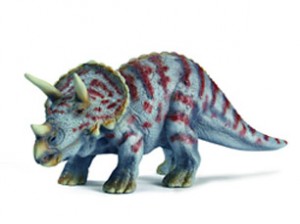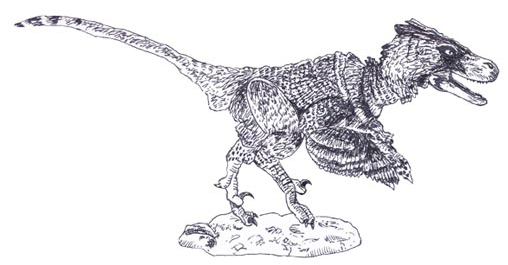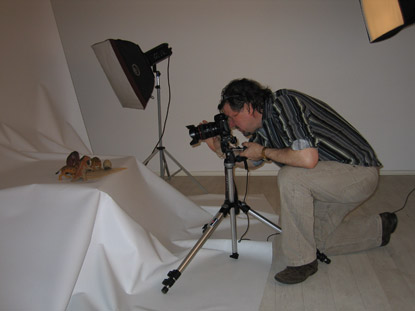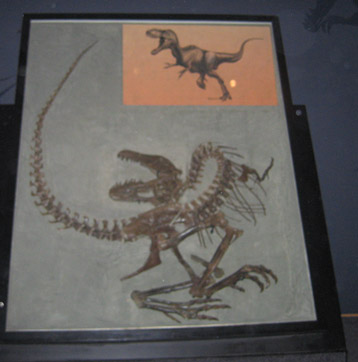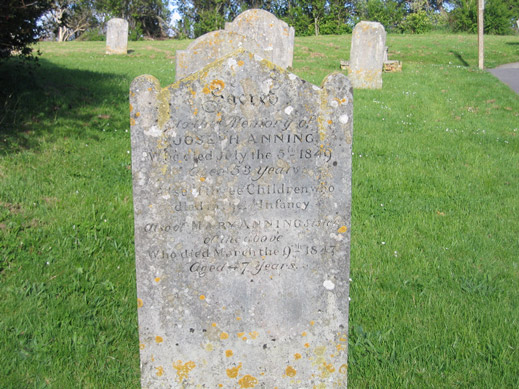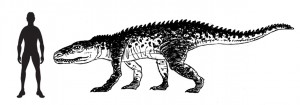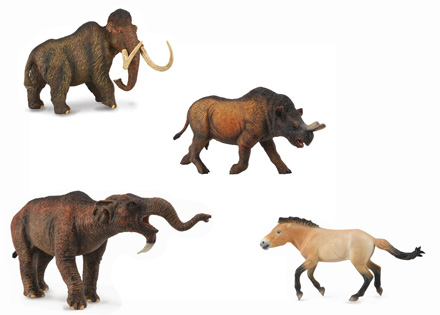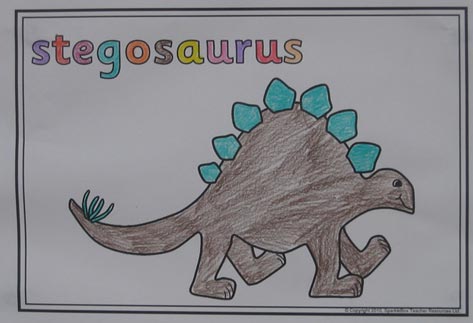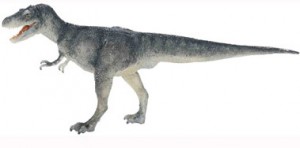Triceratops for Sale
Triceratops Available to the Highest Bidder – Three-horned Face up for Auction
An almost complete fossil Triceratops, perhaps one of the best known of all the dinosaurs, is going under the hammer at Christie’s; the auction house in Paris next month. There is a Triceratops for sale at an auction house.
The almost 70% complete fossil is the prize lot in an auction of 150 rare items from natural history collections – fossils, skeletons and minerals expected to fetch in excess of £1.225 million GBP (1.6 million EUR).
As well as the three-horned dinosaur, there will be opportunities to purchase a Sabre-toothed cat skull, a tyrannosaur egg, plus the tibia (shinbone) of an Apatosaurus. Although it is difficult to put a reserve on such unique and rare items; the egg is expected to fetch over £15,000 GBP (20,000 EUR) and the sauropod tibia around £23,000 (30,000 EUR).
The Triceratops is certainly the star attraction, the fossil is almost 70% complete, the missing bones having been replaced by resin replicas to provide an articulated and posed exhibit. It will be the first time a dinosaur specimen has gone up for public sale since the Tyrannosaurus rex called Sue was auctioned at Sotheby’s in New York on October 27th 1997. Sue, an almost complete T. rex fetched $8.36 million USD, it is unlikely bidding for this Triceratops will reach those dizzy heights, but if you want a three-horned face for your living room or hall expect to pay about £380,000 GBP (500,000 EUR) for the privilege.
Triceratops for Sale
Triceratops is perhaps the most famous of the horned dinosaurs. It gets its name from the three forward facing horns on its face, approximately 60 skulls have been excavated plus a number of disarticulated specimens. Finding a complete fossilised Triceratops is an exceptionally rare event. The skull of an adult Triceratops is over 3 metres in length, it would have been exceptionally heavy and as there was not a great deal of meat on it, this part of the Triceratops was often left alone by Tyrannosaurus rex which predated on these animals. The robust nature of the skull favoured preservation so there is a reasonable amount of fossilised skull material in the fossil record. However, the rest of the animal has proved to be much more difficult for palaeontologists to find.
If a Triceratops had been killed by a meat-eater the carcase would have been broken up and eaten. What remained would have been soon scavenged so little would remain available for transport and preservation as fossils. Even if a Triceratops died of natural causes the body would still have been attacked by hungry scavengers, quick to seize the opportunity of an easy meal.
The Herding and Social Behaviour of Triceratops
The herding and social behaviour of Triceratops also seems to have counted against it when it comes to fossilisation potential. Unlike other ceratopsians, Triceratops seems to have moved around in relatively small groups, so there is less likely to find a mass bone-bed with Triceratops than with other slightly earlier horned dinosaurs such as Centrosaurus.
Some scientists claim that there may be up to ten different species of Triceratops. Subtle differences in skull morphology may indicate separate species, although these differences may be due to ontogeny and sexual dimorphism (skull shapes change as animals age and there may be difference between males and females of the same species). The species represented in the auction exhibit is T. horridus, the largest recognised species of Triceratops. Triceratops horridus means “horrible horned face” , but hopefully this name will not put off any bidders.
It certainly is a large specimen with an overall length of 7.5 metres and a total fossil weight of approximately 2 Tonnes – very impressive; but a full size T. horridus would have exceeded 9 metres in length and some scientists estimate a body weight of around 10,000 KGs (that is the equivalent of two African elephants).
The fossil skeleton was originally found by a ranch owner in the US state of North Dakota and acquired in 2004 by a European buyer who wants to remain anonymous, said a Christie’s spokesman.
“This specimen is the fourth most complete discovered so far,” he went on to state.
For many years scientists debated how Triceratops might have walked. Two schools of thought emerged, one school believed that Triceratops moved its front legs like a lizard in a more sprawling type gait. The second group of scientists believed that Triceratops walked with its elbows tucked in under the body, like a modern Rhinoceros. To substantiate which theory was most likely to be correct the palaeontologists needed one crucial piece of evidence – an articulated Triceratops with the feet in situ.
Unfortunately, tyrannosaurs and other meat-eaters tend to leave only scraps. When ever fossils of Triceratops were found the feet were almost never located. Perhaps the feet of Triceratops were especially tasty for a tyrannosaur, a delicacy almost, like chicken feet are a delicacy in some parts of Asia. More likely, the large amount of meat on this part of the animal would have made the bones attractive and although large, many predators at the time were capable of picking up and moving Triceratops limbs away from the rest of the carcase to consume without the danger of the body attracting other hungry mouths to threaten them.
Not so long ago a partially articulated fossil Triceratops was discovered. The whole of the left side of the carcase had been washed away but the right side was almost complete and most importantly of all, the feet remained. It was hoped that this specimen (nick-named Raymond), would solve the mystery of how Triceratops walked once and for all. Unfortunately, the bones had been rather flattened and squashed during preservation so the fossil evidence could in effect, be interpreted and presented in such a way to support both theories. Scientists seemed to be no nearer understanding whether this four-legged leviathan walked like a lizard or in a more erect pose like a rhino.
Thankfully, the discovery of some beautifully preserved fossilised Triceratops ribs and other body parts including shoulder blades helped shed some further light onto this mystery. Scientists were able to see how the front legs would have moved in relation to the shoulder blade sockets. The result, led some scientists to conclude that Triceratops had a semi-erect posture, somewhere between walking with a sprawling gait like a lizard and the elbows tucked underneath walking style of a Rhinoceros.
A Model of Triceratops with “modern pose”
Picture credit: Everything Dinosaur
The model shown is from the Schleich Dinosaur series, it depicts Triceratops with a semi-erect stance with the hind legs, bowed out a bit to make room for the animal’s enormous gut.
To view the hand-painted Triceratops model: Dinosaur and Prehistoric Animal Models.
The bright colours shown on this particular model is following a trend amongst palaeontologists to illustrate herding dinosaurs with stark, contrasting colours. It is believed that Triceratops had excellent colour vision and it may have used body patterns to communicate with other members of the herd, show dominance, social status and such like.
Prices for dinosaur fossils have reached record levels in recent years. They have become the “must haves” of the rich and famous, so this has led to the removal of many important finds out of scientific circles and into private collections.
Even movie stars have started collecting dinosaurs, to read an article on celebrities arguing over tyrannosaurs: Dinosaur Bidding Wars – Celebrities push up prices of Dinosaur Fossils.


